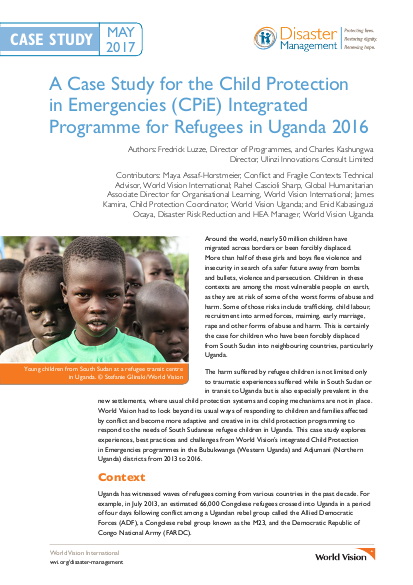
Around the world, nearly 50 million children have migrated across borders or been forcibly displaced. More than half of these girls and boys flee violence and insecurity in search of a safer future away from bombs and bullets, violence and persecution. Children in these contexts are among the most vulnerable people on earth, as they are at risk of some of the worst forms of abuse and harm. Some of those risks include trafficking, child labour, recruitment into armed forces, maiming, early marriage, rape and other forms of abuse and harm. This is certainly the case for children who have been forcibly displaced from South Sudan into neighbouring countries, particularly Uganda. The harm suffered by refugee children is not limited only to traumatic experiences suffered while in South Sudan or in transit to Uganda but is also especially prevalent in the new settlements, where usual child protection systems and coping mechanisms are not in place.
World Vision had to look beyond its usual ways of responding to children and families affected by conflict and become more adaptive and creative in its child protection programming to respond to the needs of South Sudanese refugee children in Uganda. This case study explores experiences, best practices and challenges from World Vision’s integrated Child Protection in Emergencies programmes in the Bubukwanga (Western Uganda) and Adjumani (Northern Uganda) districts from 2013 to 2016.